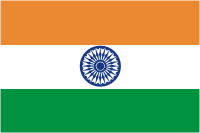
Ahhh...the marketplace in India. Nothing in America remotely compares to this experience (assault, really) of the senses. My experience in the marketplace - the mall, for example, is quite plain and sanitized by comparison. Franchises stores selling branded merchandise to over-advertised consumers that look the same everywhere. Teenagers, god love 'em, man the kiosks and cash registers not really caring how much you spend on those jeans or whether or not you buy anything at all, much less even come into the store.
But in India family livilihoods depend on sales made that day and the marketplace, bazaar if you will, is filled with expert merchants who are tuned to the psycholog of buying. It seems like when business is slow that they will stop at nothing to simply get you into the store.
A bazaar simply implies a narrow street of shops sometimes covered by awnings or even the ubiquitous blue tarpaulin. Wares pour out into the streets or even hang from overhead. The smell of street food - samosas, pani puris, fried jelebe (ahhh - jelebe) fills the air. Merchants quickly move masses to and from their balance scales, measuring a 1/4 kg of onions, a 1/2 kg of bringal (mini eggplants), or in my case, a full kg of gulab jamun.
A sale might go like this:
Me: "How much for this salwar kameez material?"
Merchant: "Today special price because no business."
Me: "Really? OK - how much?"
Merchant: "This will look beautiful for wife."
Me: "Thanks. OK, now how many rupees?"
Merchant: "For you, my friend, 800 rupees, only."
Me: "800 rupees!?! You know I live here in India - I'm not some tourist fresh off the plane."
Merchant: ?
Me: "50 rupees, maximum"
Merchant: "Ha-ha-ha! No-no-no - not possible. This is less than I pay. 750 rupees."
Me: "You're not hearing me, friend. 50 rupees only."
Merchant: "OK, OK, then for you, 700 rupees".
And the dance might go on like this for another 5 minutes or so until one of two things happens:
1) He gets annoyed with me because I am seriously lowballing the price and stops talking to me.
2) I get annoyed with him because it's more than I want to pay and I walk out the store, which brings us to Act - 2, where the merchant comes after me into the street.
Merchant: "OK, OK, your price! 300 rupees."
Me: "My price?! My best offer is 200 rupees."
Merchant: "Please, this is not possible. 250 rupees. OK, take it! Take it!"
Me: "220 rupees, maximum price."
Merchant: "OK, OK, take it, 220 rupees."

In the end it's a fun exchange, if you're willing to accept the fact that sometimes you'll walk away with nothing. There is one golden rule to haggling though: Any Indian you tell about your purchase will respond: "Ahhhh... I think you have paid too much for this." (even if you got it for one rupee).
The central market in Mysore is called the Devaraja Fruit and Vegatable Bazaar. It was teeming with photo opportunities around every corner... the hard part was finding the right way to discreetly make portraits. It was the highlight of our third day in Mysore.
 Trick or Treat? I'll take a samosa, thank you.
Trick or Treat? I'll take a samosa, thank you. Evan's costume was a stoplight of course, since his favorite game is "red light-green light", while Eli was a wrapped present (with only his head sticking out of the box).
Evan's costume was a stoplight of course, since his favorite game is "red light-green light", while Eli was a wrapped present (with only his head sticking out of the box). 






























 I have promised myself to attempt to capture the morning prayer / assembly in video and post it here later - perhaps in November.
I have promised myself to attempt to capture the morning prayer / assembly in video and post it here later - perhaps in November. 



